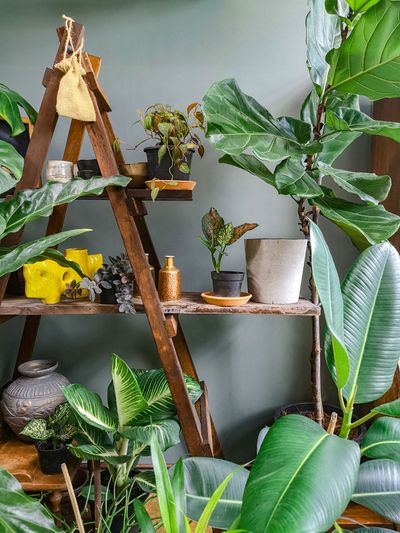Some of us may have heard of microclimates outdoors, but you may be wondering are there microclimates indoors too? The answer is YES, so let’s discuss what this means and why it is important.
About Microclimates in Your House
When you decide where to place a certain plant, it is important that you give it the best location in your home.
Humidity
Various locations of your home can have drastically different humidity levels in the air. If you have plants that like higher humidity, such as ferns or calathea, it is important to try and increase humidity. You can create a humid microclimate simply by grouping many plants together. Plants will naturally transpire water and create a more humid microclimate for themselves. Other options to increase humidity are to locate your plants in naturally humid areas such as bathrooms (assuming, of course, that your bathroom has enough light for your plants!) or the kitchen. You can also use a humidifier or set plants on top of humidity trays filled with pebbles and water. The water level should be below the pebbles and, as the water evaporates, it will create a humid microclimate.
Light
Light can vary greatly throughout your home. It is not enough to say that you should place a certain plant in front of a northern exposure window, for example. Not all windows are created equal. The size of the window, the season of the year, obstructions in front of a window, and other factors can vary the amount of light substantially. Use a light meter to get an idea of which locations are darker or brighter.
Temperature
Many of us set thermostats throughout the year, whether it is for air conditioning or heating. Does this mean that the entire home will be the same temperature? Absolutely not! Hot air rises, so the second floor of your home may be warmer. Situating your plants next to a heating vent may also result in a microclimate of both higher temperatures than you’d think, as well as drier air. One good way to study the temperature in various microclimates in your home is to purchase a minimum/maximum thermometer. This will tell you the lowest and highest temperature in an area within a 24-hour period. The varying results throughout your home may surprise you.
Air Circulation
Last but not least is air circulation. Many people don’t even consider this microclimate factor. It can be extremely important for many plants, such as epiphytes (orchids, bromeliads, etc.) that are used to high air circulation. Simply turning on a ceiling fan to circulate the air can help provide better growth conditions for plants, as well as help deter fungal diseases that can flourish in stagnant air.
